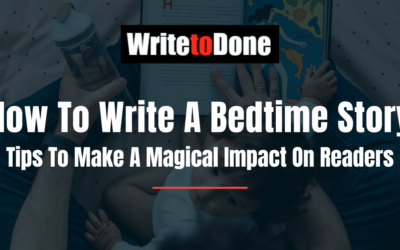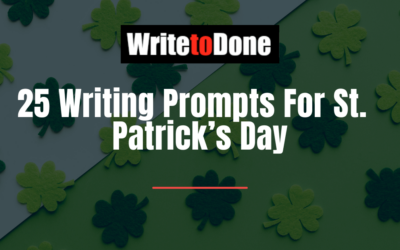If you’re anything like me, sometimes writing a first draft can be a huge struggle. On some
On some level we may be busy “just writing,” but on another level, we’re often working hard to ignore, silence or simply drown out our mind’s chatter.
No wonder we sometimes resist writing and finishing our first drafts!
It’s not always easy to split our attention between writing and “mind-management.”
To write a useful, “flavorful” first draft, it helps to have a helpful mindset and a few tools to help us focus.
Mind Management 101: Accept the Chatter
Although the flow state feels amazing when it happens, it’s a state that blesses us mostly when we’re not explicitly trying. “Flow” won’t happen every time we write.
To write a flavorful first draft, it’s important that we understand and accept a simple fact: we’re human, and sometimes we’re going to bring an unruly or uncooperative mind to the table when we write.
Writers I coach sometimes worry they may be “forever blocked” when they’ve had a difficult writing session. They may feel that until they learn to manage or “completely overcome” their negative mental chatter, they’re not writing well. Please avoid making these common mistakes.
Remember that every writer experiences blocks.
Remember that the quality of one writing session doesn’t define a life’s work of writing.
We diffuse our focus and use up valuable writing energy when we try to “reason with” or overcome distracting thoughts. The solution to creating fantastic first drafts is much simpler. First, accept that “mental chatter happens.” Then, redirect your mental chatter as you write.
Mind Management 102: Redirect
Ever notice that when you’re just about to get a shot, the nurse suddenly asks about your job, your family or your summer plans? When we’re faced with a task we resist (getting a shot, writing a first draft), it’s much easier to relax when we’re focused on something else.
Literary forms and writing exercises jump-start our writing because they provide us with helpful limits. (“Have I made the links explicit between ’cause’ and ‘effect?'” “Hmmm. Have I described seven different colors without naming them?”) Restrictions and guidelines occupy our minds so we can focus more freely on writing.
Here are first draft secrets that will make things easy for you
I confess: Swiss cheese intrigues me. It’s substantive, it’s flavorful and it’s got some degree of structural integrity. Swiss cheese doesn’t fall apart, despite its many holes!
Try the following exercise with a sense of openness and adventure. We’re going to build your “Swiss cheese draft” by shifting your focus from creating a “solid” first effort to creating a “flavorful” slice of writing, one that holds together, despite its many gaps.
Here’s how:
Step #1 – Limit Your Focus
Decide What the “Cheese” Is.
Before you begin to write, choose one element (“content” or “form”) to define your Swiss cheese draft’s structure. In other words, answer the question, “what’s the ‘cheese?'”
- For example, if you need to loosen up and have fun, you might take risks by challenging yourself to see how badly (very badly) you can write. This is an example of a focus on content.
- You might want to explore a new character’s motivations or personality in-depth. If so, you might challenge yourself to situate your character in a specific setting and see how emotionally resonant you can depict the character’s thoughts and actions. This is another example of a content focus.
- If you’re drafting a persuasive essay, you may want to sketch out the basic structure of your argument, using placeholders for specific facts, anecdotes or context to support your points. This emphasis on drafting the piece’s structure is an example of a focus on form.
Once you’re defined your “cheese,” write a one-sentence statement of “what I’m going for in this draft” and put it at the top of your screen or page. (Tip: you may choose to emphasize the word “draft” as a reminder.)
Step #2 – Limit Your Time.
Decide to spend a specific and limited amount of time writing your Swiss cheese draft. For example, “I’ll draft my new article for the next two hours, until 12 noon…no more, no less.”
Your time frame doesn’t have to be limited to one day. If you’re working on a book chapter or long essay, you may need several work sessions. Just be sure to decide on a time limit, and when you’re finished write it at the top of your page or screen.
Now you’re ready to write. To keep you focused, you may want to set a timer as you begin.
(Tip: To stay focused on your project, send a friend a “bookending” email, Tweet or text message. Tell them you’re starting your draft, and describe your time limit. Let them know how long it’ll be before you report back to them with a quick progress report. Bookending is amazingly effective!)
Step #3 – Mark the Holes as You Go.
You don’t need to have all your ideas developed or research completed to finish a useful first draft.
As you write, use placeholders such as “X”, “[REWORK],” [??]” or “_________________” to hold space for things to add later. (You may do this already.)
Using placeholders acknowledges gaps you’ll return to in later revisions, freeing you up to focus on your writing.
Step #4 – Notice and Redirect.
(Keep Making “Cheese”!)
As you’re writing, your mind may still speak up and try to distract you from writing. If this happens, here’s your chance to greet it wisely.
“Hello, mental chatter…I’ve been expecting you! Have a seat right over here, and hey – would you watch the clock for me?
“Oh, go check something for me. Can you remind me, ‘what’s the cheese?’ Oh yeah, that’s right. Thanks!
“Sit tight, now…I’ll be with you shortly.”
Step # 5 – Cure the Draft Before You Revise
According to this Swiss cheese recipe, a newly formed cheese must cure for four months to a year before it’s ready to be eaten. Your finished Swiss cheese draft may be cured and ready to revise as early as two days after creation. It may need longer to settle. Let your aesthetic palette guide you, and when it’s time to sample your draft, enjoy your flavorful first effort.
I hope you’ll have fun with these ideas.
How do you manage your mind when you write?
How’d your first “Swiss cheese draft” turn out?
Image courtesy of Pixabay
















